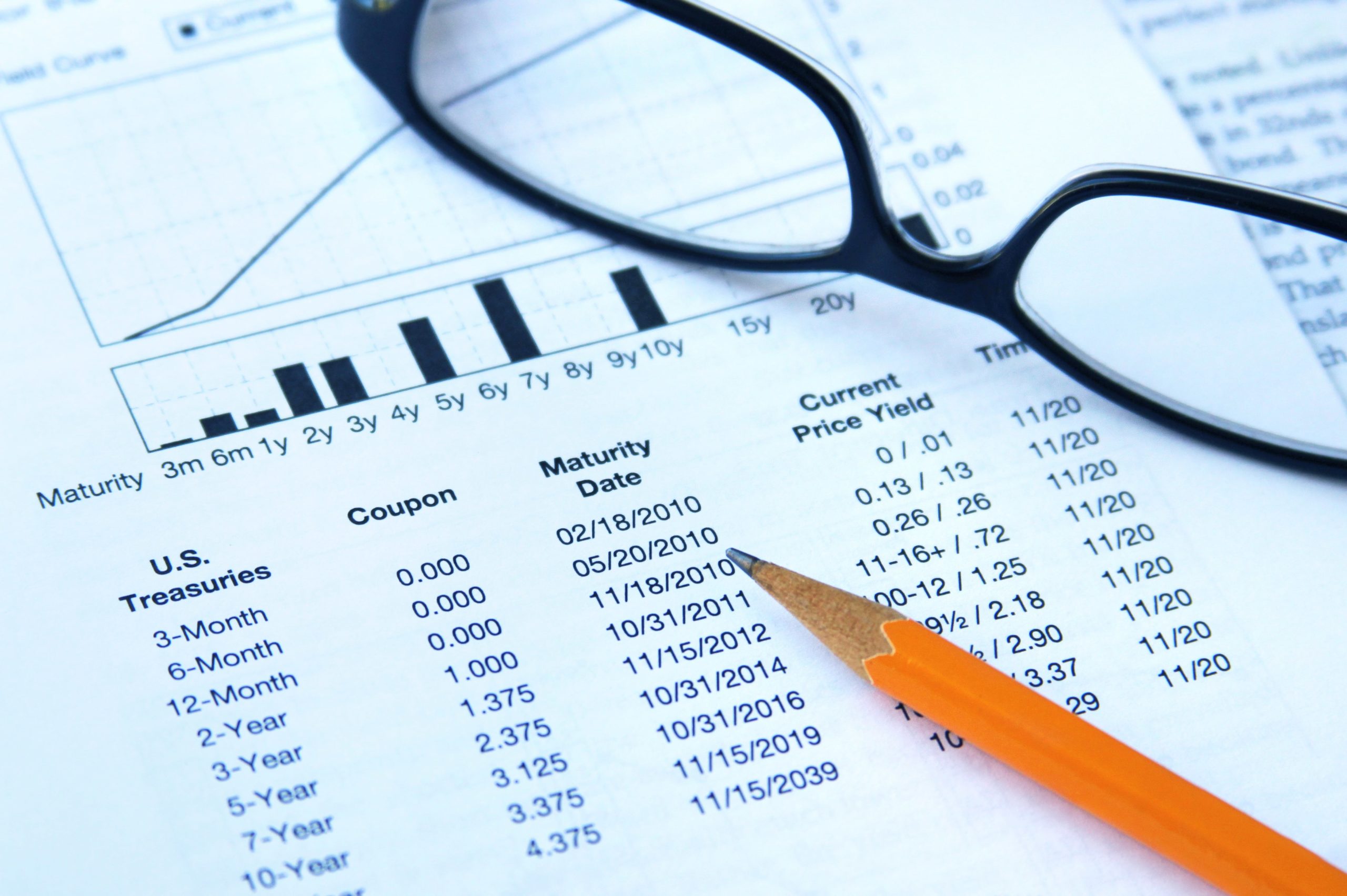U.S Treasury Bonds and high-quality corporate bonds have always been considered a conservative and safe way to invest, compared to stocks. Many investment advisors would say, “subtract your age from 100, the number you get should be the percent of your portfolio invested in stocks, the rest should be in bonds”. In other words, as we age and get ready to use our savings for retirement, bonds have always been considered safer than stocks in a portfolio. They have a predictable yield. They are backed by the government. They are less volatile than stocks. They aren’t subject to bankruptcy. They don’t lose value when the market drops. These are all positives which have led financial advisors for years to recommend a bond heavy portfolio as you near retirement.
What is a Bond? US Treasury bonds are government debt obligations of 20-30 years issued and backed by “the full faith and credit of the U.S. government.” These are loans to the government in which interest is paid at regular levels periodically until the bond matures and the principal is returned to the bond purchaser. Governments use these loans from citizens to fund expenses and projects. Short term bonds, with less than one year maturity dates, are referred to as Treasury Bills, or T-Bills. The longer the date to maturity of a bond, usually the higher the interest rate/yield. There are other types of treasury bonds. There are also corporate bonds, and junk bonds as well, but those are topics for another article.
The advised approach to bonds makes sense when bonds pay a decent yield, enough for a person in retirement to live off. Current thirty-year yields are just over 2%. One would have to have $2,500,000 invested in 30-year bonds in order to have an annual income of $50,000. Historically, the average 30-year bond yield over the past several decades has been 5-6%. At 5%, it would take $1,000,000 invested to achieve the same $50,000 annual income.
Here is an example of why bonds with a long maturity date aren’t as good of an investment in the current low interest rate environment. What if rates were to increase from 2% to 4% on a 30-year bond, still a historically low number for bond yields. If you bought $10,000 worth of 30-year US Bonds at a 2% rate, this yields an income of $200 annually. If rates went up to 4% for new 30-year bonds you would prefer that, but you already own the 2% bond. If you wanted to sell the 2% bond to someone else, the price would have to be cut in half for the purchaser to achieve the going yield of 4%. That’s a $5000 loss. If you don’t sell the bond, you’ll get your $10,000 back at the end of thirty years, but that’s a long time to wait.
If interest rates are going down, then bonds can be a good investment since they can be sold for more than the purchase price. For example: if you were to buy a 30-year bond yielding 2% for $10,000. If bond yields drop to 1%, then you could sell your $10,000 bond for $20,000. Not a bad return. However, since yields and rates are at historically low levels right now, odds are currently that bond yields are much more likely to increase going forward, meaning bond prices will go down. We are in inflationary times but still with historically low yields.
Treasury bills, with much shorter durations/maturity dates of one year or less would be considered a safer purchase currently. It is easy to live with that purchase for just a year, get the principal back and be able to reinvest and purchase a new bond at a higher rate later.
Some investors in or near retirement have decided to chase higher yields by going into the stock market, looking for dividend paying stocks. This means retirees are in riskier situations in order to fund retirement. It’s hard to predict the future, but it’s important to talk about and understand where the market is at today. Before investing in any new stocks, bonds, or treasury bills make sure you understand where the market stands and make an educated choice on your investment.
Disclaimer: This is in no way investment advice, just information to think about and be aware of.

